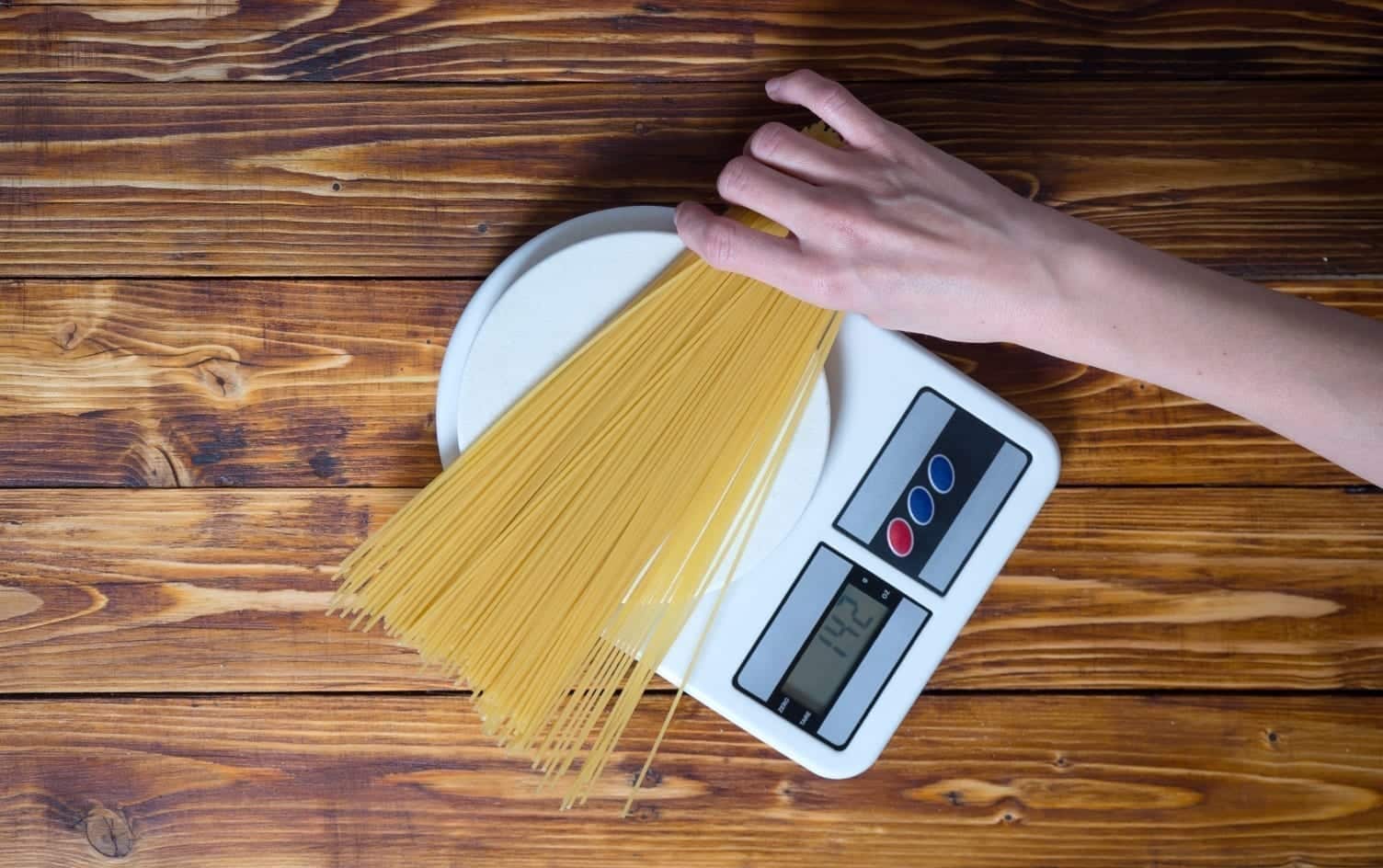Feeling like you’re eating well but not seeing any weight loss is a common, and frustrating, experience. One main culprit: estimating your portion sizes. Here, a look at the main problems with this approach and how you can take guessing out of the equation:
IT’S DIFFICULT TO CORRECTLY GUESS HOW MUCH YOU’RE EATING
“Most people are not accurate with estimating how much they are eating unless they have long-term practice weighing and measuring a variety of foods,” says Emily Field, RD. In fact, even experts are pretty bad at it. “Research shows that nearly everyone from nutrition professionals to healthcare practitioners to the average person is inaccurate at estimating calories for their typical portion sizes,” adds Field.
MEMORY RECALL ISN’T ALWAYS ACCURATE
“Many people completely forget what they’ve eaten,” explains Stacey Mattinson, RD. Think about it: Can you remember what you ate last Thursday? Probably not. So if you’re basing what and how much you eat off of previous meals without any measuring or tracking involved, you’re unlikely to be accurate in your estimations, which can lead to overeating.
YOU MIGHT IGNORE YOUR HUNGER SIGNALS IF YOU ESTIMATE
“Satiety, or how satisfied you are after a meal, is rooted in both physical and psychological mechanisms,” Field explains. “For example, a meal that is rich in protein and fat will digest slower, and a meal that is heaping in non-starchy vegetables will take up a lot of room in your stomach. Both meals will likely make you feel full and physically satisfied after eating. However, if you perceive a meal to be ‘light,’ you might find yourself hungry between meals or experience cravings — which points to the role of psychology in meal satisfaction.”
A recent study looked at this phenomenon. Participants were given the same-sized omelet to eat for breakfast, and told it contained either two or four eggs (it actually contained three.) Researchers discovered the people who believed they ate a smaller omelet reported feeling hungrier two hours later, and even ate more at lunch and throughout the rest of the day compared to the people who believed they’d eaten four-egg omelets. This underscores how your perception of how much you’re eating is extremely powerful. Understanding your portions on a more precise level (rather than just estimating) can help you keep your hunger in check.
HOW TO COMBAT THE GUESSING GAME
“One of the best ways to get more accurate is to track your daily food intake, including what you eat at home, what you eat out when you’re with friends and what you eat in times of stress or celebration,” Field says. Here’s how to get the most out of tracking:
Start small. Tracking your food may seem intimidating at first, but experts say the best approach is to start small. “Decide that you’re going to start food logging and commit yourself to three days, and then one full week, and then maybe a sample of days you eat outside the home and a few days you eat at home,” recommends Field. Ideally, you want to use a measuring implement, such as a food scale, to get accurate amounts for each food you eat, although this may not be possible when eating out.
“Let this be a neutral, information-gathering experience and don’t pass judgment on your eats,” Field says. “Should you choose to alter your meal choices based on the data you’ve collected on yourself, do so in small steps, such as cutting back on how much dressing you use or portioning yourself a few chips instead of eating straight from the bag.”
Opt for foods that help you tune into your hunger and satiety signals. In addition to understanding how much you’re truly eating, focusing on whole foods can make a big difference in keeping overeating in check. “You could be eating enough calories and not feeling satiated for a number of reasons, such as the fact that beverages generally don’t trigger satiety the same way as chewing (if you’re drinking tons of smoothies, for example) or poor macronutrient composition,” says Mattinson.
What’s more, “foods high in salt, sugar and fat can override satiety signals so you don’t feel full even though you’ve had adequate calories.” Instead, focus on “getting enough protein and lots of colors (fruits, veggies and nutrient-rich whole grains) for high fiber.”




